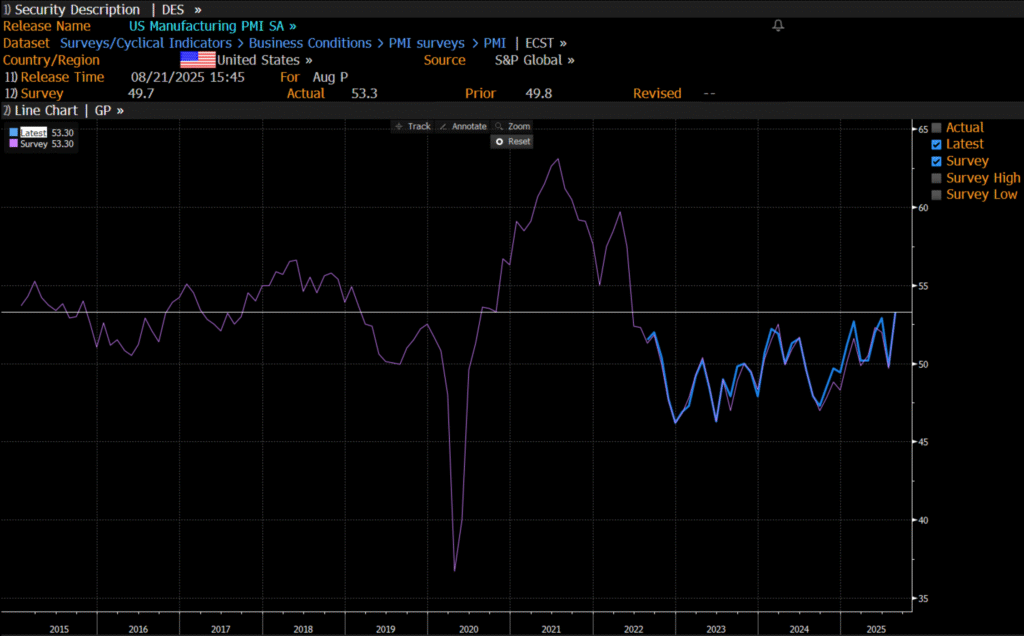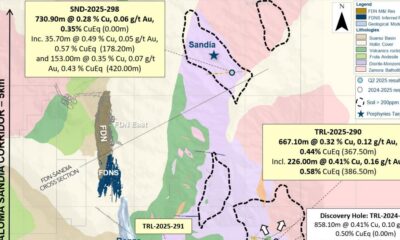Analys
QT is good for OPEC

 It is quite clear that the strong rebound in US shale oil production since early 2016 has been fuelled by access to cheap and easy money derived from the world’s central banks QE programs. It is not to say that US shale oil is not viable at the right price. US shale oil business has however been running at negative cash flow year after year with growth being bankrolled by investors. Not even in Q3-18 this year when Brent averaged $75.8/bl and WTI averaged $69.5/bl did they in total have positive cash flow. Since the start of 2017 the three main US shale oil producers (EOG, Continental Resources and Pioneer Natural Resources) have had an average negative equity return of -13% while Equinor has yielded +21% and S&P 500 has yielded +16% to end of Friday last week.
It is quite clear that the strong rebound in US shale oil production since early 2016 has been fuelled by access to cheap and easy money derived from the world’s central banks QE programs. It is not to say that US shale oil is not viable at the right price. US shale oil business has however been running at negative cash flow year after year with growth being bankrolled by investors. Not even in Q3-18 this year when Brent averaged $75.8/bl and WTI averaged $69.5/bl did they in total have positive cash flow. Since the start of 2017 the three main US shale oil producers (EOG, Continental Resources and Pioneer Natural Resources) have had an average negative equity return of -13% while Equinor has yielded +21% and S&P 500 has yielded +16% to end of Friday last week.
Quantitative tightening is now blowing out credit spreads. US high yield junk rated credit spreads have jumped to 5.5% over investment grade in Q4-18. Not a single company in the US has been able to borrow money in the $1.2trn high yield market so far in December which is the worst since November 2008 according to FT today. So easy money is rapidly drying up for US shale oil players which means that they will likely have to run disciplined according to cash flow. That implies much softer US shale oil production growth in a market where the high yield US junk bond energy credit market is closed and Brent and WTI prices are $60/bl and $51/bl respectively.
What matters for US shale oil production growth is US shale oil well completions per month and how much new production they bring that month versus losses in existing production that month. As production has moved higher and higher the running losses in existing production has moved comparably higher as well. At the moment losses are running at a rate of 530 k bl/d/mth. So US shale oil production is losing half a million barrels per day each month. So more and more wells needs to be completed each month to counter this. The net of new production from well completions and losses in existing production is what brings either growth or decline in US shale oil production.
In October US shale oil producers completed 1308 wells. In real, productivity adjusted terms this is the highest level ever and it is 57% higher than the real, average level in the peak year of 2014. But losses in existing production have increased strongly as well.
We have calculated the “steady state US shale oil well completion rate (SSCR)” meaning the number of well completions needed in order for US shale oil production to move sideways. US shale oil production is growing when the monthly completion rate is above the SSCR and it is contracting when it is below the SSCR. In October completions were running at 231 wells (18%) above the SSCR. Completions were however running at a rate of 35% above the SSCR level in September 2017. As a result the marginal, annualized production growth in the US was much stronger in late 2017 than what it is right now. In late 2017 the 6mth average, marginal annualized US shale oil production growth was running at a stunning 1.9 m bl/d/yr. It is still running at a very strong 1.5 m bl/d/yr rate, but the last monthly data point for October (marginal, annualized) was down to 1.3 m bl/d. And that was despite the fact that real well completions were at an all-time-high of 1308 wells.
So more and more wells needs to be completed in order to keep growth going. At current crude oil price levels the US shale oil business is running a negative cash flow and equity owners have lost money since the start of 2017 and the US high yield energy market now seems to have closed. US shale oil well completions are in our calculations running at an 18% completion rate above the SSCR level. So US shale oil players only need to reduce completions by 231 wells ( or 18%) per month to bring the marginal US shale oil production growth rate to zero.
If crude oil prices continue at these levels this is probably exactly what we’ll see: well completions will be brought down to the SSCR level and we’ll have zero marginal production growth in US shale oil production. So far OPEC+ has put a floor under crude oil prices with Brent crude at $60/bl. If we stay at this price the well completion rate will probably be brought down towards the SSCR level and US shale oil production will stop growing for a while. Lower oil prices and lack of credit (due to QT) will now most likely give OPEC+ a helping hand in the market balancing.
Today we’ll have the latest US EIA Drilling Productivity report showing the well completions in November. It will be extremely interesting to see if prices already have started to bite so and the completion rate has started to tick lower from October to November. Losses in existing production have definitely ticked one notch higher since October and the marginal, annualized production growth has probably ticked lower.
Analys
OPEC+ in a process of retaking market share

Oil prices are likely to fall for a fourth straight year as OPEC+ unwinds cuts and retakes market share. We expect Brent crude to average USD 55/b in Q4/25 before OPEC+ steps in to stabilise the market into 2026. Surplus, stock building, oil prices are under pressure with OPEC+ calling the shots as to how rough it wants to play it. We see natural gas prices following parity with oil (except for seasonality) until LNG surplus arrives in late 2026/early 2027.

Oil market: Q4/25 and 2026 will be all about how OPEC+ chooses to play it
OPEC+ is in a process of unwinding voluntary cuts by a sub-group of the members and taking back market share. But the process looks set to be different from 2014-16, as the group doesn’t look likely to blindly lift production to take back market share. The group has stated very explicitly that it can just as well cut production as increase it ahead. While the oil price is unlikely to drop as violently and lasting as in 2014-16, it will likely fall further before the group steps in with fresh cuts to stabilise the price. We expect Brent to fall to USD 55/b in Q4/25 before the group steps in with fresh cuts at the end of the year.

Natural gas market: Winter risk ahead, yet LNG balance to loosen from 2026
The global gas market entered 2025 in a fragile state of balance. European reliance on LNG remains high, with Russian pipeline flows limited to Turkey and Russian LNG constrained by sanctions. Planned NCS maintenance in late summer could trim exports by up to 1.3 TWh/day, pressuring EU storage ahead of winter. Meanwhile, NE Asia accounts for more than 50% of global LNG demand, with China alone nearing a 20% share (~80 mt in 2024). US shale gas production has likely peaked after reaching 104.8 bcf/d, even as LNG export capacity expands rapidly, tightening the US balance. Global supply additions are limited until late 2026, when major US, Qatari and Canadian projects are due to start up. Until then, we expect TTF to average EUR 38/MWh through 2025, before easing as the new supply wave likely arrives in late 2026 and then in 2027.
Analys
Manufacturing PMIs ticking higher lends support to both copper and oil

Price action contained withing USD 2/b last week. Likely muted today as well with US closed. The Brent November contract is the new front-month contract as of today. It traded in a range of USD 66.37-68.49/b and closed the week up a mere 0.4% at USD 67.48/b. US oil inventory data didn’t make much of an impact on the Brent price last week as it is totally normal for US crude stocks to decline 2.4 mb/d this time of year as data showed. This morning Brent is up a meager 0.5% to USD 67.8/b. It is US Labor day today with US markets closed. Today’s price action is likely going to be muted due to that.

Improving manufacturing readings. China’s manufacturing PMI for August came in at 49.4 versus 49.3 for July. A marginal improvement. The total PMI index ticked up to 50.5 from 50.2 with non-manufacturing also helping it higher. The HCOB Eurozone manufacturing PMI was a disastrous 45.1 last December, but has since then been on a one-way street upwards to its current 50.5 for August. The S&P US manufacturing index jumped to 53.3 in August which was the highest since 2022 (US ISM manufacturing tomorrow). India manufacturing PMI rose further and to 59.3 for August which is the highest since at least 2022.
Are we in for global manufacturing expansion? Would help to explain copper at 10k and resilient oil. JPMorgan global manufacturing index for August is due tomorrow. It was 49.7 in July and has been below the 50-line since February. Looking at the above it looks like a good chance for moving into positive territory for global manufacturing. A copper price of USD 9935/ton, sniffing at the 10k line could be a reflection of that. An oil price holding up fairly well at close to USD 68/b despite the fact that oil balances for Q4-25 and 2026 looks bloated could be another reflection that global manufacturing may be accelerating.
US manufacturing PMI by S&P rose to 53.3 in August. It was published on 21 August, so not at all newly released. But the US ISM manufacturing PMI is due tomorrow and has the potential to follow suite with a strong manufacturing reading.

Analys
Crude stocks fall again – diesel tightness persists

U.S. commercial crude inventories posted another draw last week, falling by 2.4 million barrels to 418.3 million barrels, according to the latest DOE report. Inventories are now 6% below the five-year seasonal average, underlining a persistently tight supply picture as we move into the post-peak demand season.

While the draw was smaller than last week’s 6 million barrel decline, the trend remains consistent with seasonal patterns. Current inventories are still well below the 2015–2022 average of around 449 million barrels.
Gasoline inventories dropped by 1.2 million barrels and are now close to the five-year average. The breakdown showed a modest increase in finished gasoline offset by a decline in blending components – hinting at steady end-user demand.
Diesel inventories saw yet another sharp move, falling by 1.8 million barrels. Stocks are now 15% below the five-year average, pointing to sustained tightness in middle distillates. In fact, diesel remains the most undersupplied segment, with current inventory levels at the very low end of the historical range (see page 3 attached).
Total commercial petroleum inventories – including crude and products but excluding the SPR – fell by 4.4 million barrels on the week, bringing total inventories to approximately 1,259 million barrels. Despite rising refinery utilization at 94.6%, the broader inventory complex remains structurally tight.
On the demand side, the DOE’s ‘products supplied’ metric – a proxy for implied consumption – stayed strong. Total product demand averaged 21.2 million barrels per day over the last four weeks, up 2.5% YoY. Diesel and jet fuel were the standouts, up 7.7% and 1.7%, respectively, while gasoline demand softened slightly, down 1.1% YoY. The figures reflect a still-solid late-summer demand environment, particularly in industrial and freight-related sectors.


-

 Nyheter3 veckor sedan
Nyheter3 veckor sedanOmgående mångmiljardfiasko för Equinors satsning på Ørsted och vindkraft
-

 Nyheter4 veckor sedan
Nyheter4 veckor sedanLundin Gold hittar ny koppar-guld-fyndighet vid Fruta del Norte-gruvan
-

 Nyheter2 veckor sedan
Nyheter2 veckor sedanMeta bygger ett AI-datacenter på 5 GW och 2,25 GW gaskraftverk
-

 Nyheter4 veckor sedan
Nyheter4 veckor sedanGuld stiger till över 3500 USD på osäkerhet i världen
-

 Analys3 veckor sedan
Analys3 veckor sedanWhat OPEC+ is doing, what it is saying and what we are hearing
-

 Nyheter2 veckor sedan
Nyheter2 veckor sedanAker BP gör ett av Norges största oljefynd på ett decennium, stärker resurserna i Yggdrasilområdet
-

 Nyheter4 veckor sedan
Nyheter4 veckor sedanAlkane Resources och Mandalay Resources har gått samman, aktör inom guld och antimon
-

 Nyheter4 veckor sedan
Nyheter4 veckor sedanLyten, tillverkare av litium-svavelbatterier, tar över Northvolts tillgångar i Sverige och Tyskland







